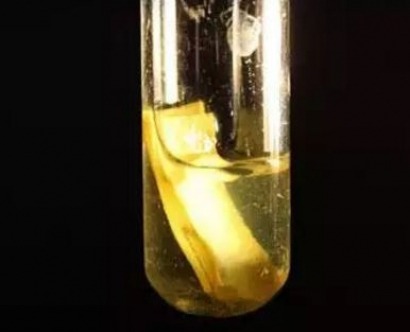
One of the challenges facing modern society is what it does with its waste products. As natural resources decline in abundance, using waste for energy is becoming more pressing for both governments and business.
Biomass has been a source of heat and energy since the beginning of recorded history. The planet’s oil reserves are derived from ancient biomass which has been subjected to high pressures and temperatures over millions of years.
Lignocellulose is the main component of plant biomass and up to now its conversion into hydrogen has only been achieved through a gasification process which uses high temperatures to decompose it fully.
Dr. Moritz Kuehnel, lead author of the study published in Nature Energy, explained that "lignocellulose is nature's equivalent to armoured concrete. It consists of strong, highly crystalline cellulose fibres, that are interwoven with lignin and hemicellulose which act as a glue. This rigid structure has evolved to give plants and trees mechanical stability and protect them from degradation, and makes chemical utilisation of lignocellulose so challenging."
The new technology relies on a simple photocatalytic conversion process. Catalytic nanoparticles are added to alkaline water in which the biomass is suspended. This is then placed in front of a light in the lab which mimics solar light.
The solution is ideal for absorbing this light and converting the biomass into gaseous hydrogen which can then be collected from the headspace. The hydrogen is free of fuel-cell inhibitors, such as carbon monoxide, which allows it to be used for power.
The nanoparticle is able to absorb energy from solar light and use it to undertake complex chemical reactions. In this case, it rearranges the atoms in the water and biomass to form hydrogen fuel and other organic chemicals, such as formic acid and carbonate.
“There’s a lot of chemical energy stored in raw biomass, but it’s unrefined, so you can’t expect it to work in complicated machinery, such as a car engine," said Dr. David Wakerley, the study's other lead author. "Our system is able to convert the long, messy structures that make up biomass into hydrogen gas, which is much more useful. We have specifically designed a combination of catalyst and solution that allows this transformation to occur using sunlight as a source of energy.
"With this in place we can simply add organic matter to the system and then, provided it’s a sunny day, produce hydrogen fuel,” Wakerley said.
The team used different types of biomass in their experiments. Pieces of wood, paper and leaves were placed in test tubes and exposed to solar light. The biomass didn’t require any processing beforehand.
The technology was developed in the Christian Doppler Laboratory for Sustainable SynGas Chemistry at the University of Cambridge.
The head of the laboratory, Dr. Erwin Reisner, said “our sunlight-powered technology is exciting as it enables the production of clean hydrogen from unprocessed biomass under ambient conditions. We see it as a new and viable alternative to high temperature gasification and other renewable means of hydrogen production. Future development can be envisioned at any scale, from small scale devices for off-grid applications to industrial-scale plants, and we are currently exploring a range of potential commercial options."
For additional information:

